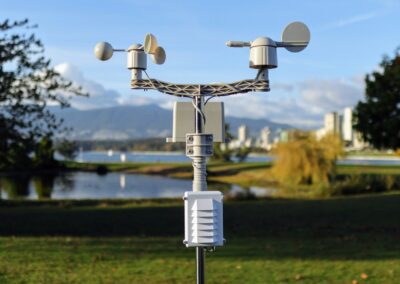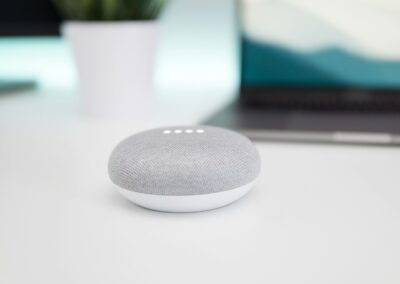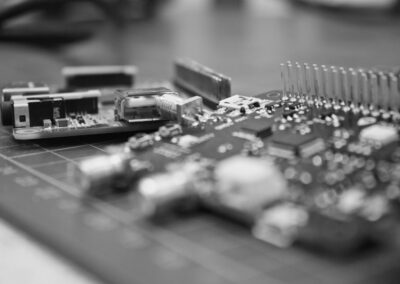How Advanced Integration Achieved Seamless Communication
The Foundation of Interoperability in Smart City Projects
Interoperability in major smart city IoT ecosystems has emerged as a critical factor in the success of large-scale urban projects, particularly in forward-thinking regions such as Saudi Arabia, the UAE, Riyadh, and Dubai. In the complex and technologically sophisticated environments of smart cities, ensuring that diverse Internet of Things (IoT) devices and platforms can communicate effectively is essential for creating a cohesive, efficient, and responsive urban infrastructure. The ability to integrate various systems—from traffic management and environmental monitoring to public safety and energy management—into a unified IoT ecosystem is what sets successful smart city projects apart.
The journey to achieving interoperability in a major smart city project often begins with the adoption of open standards and protocols that facilitate communication between devices from different manufacturers and across various sectors. For instance, a smart city initiative in Dubai might involve integrating data from multiple sources, such as traffic lights, surveillance cameras, and environmental sensors, all of which must share information seamlessly to optimize city operations. By leveraging standardized communication protocols like MQTT or CoAP, these devices can work together to provide real-time data and actionable insights, ensuring that the city’s infrastructure operates at peak efficiency.
Furthermore, achieving interoperability requires a robust architectural framework that supports the integration of both legacy systems and new technologies. In regions like Riyadh, where smart city projects are often built on existing urban infrastructures, this involves creating a flexible and scalable architecture that can accommodate future technological advancements. By designing IoT ecosystems with interoperability in mind, smart city planners can ensure that their projects remain adaptable and resilient in the face of evolving technological landscapes, thereby maximizing the long-term value of their investments.
Implementing Advanced IoT Interoperability Solutions
Implementing interoperability in major smart city IoT ecosystems requires a multifaceted approach that goes beyond simply adopting open standards. It involves the integration of middleware solutions, which act as bridges between different IoT platforms and devices, translating data formats and managing protocols to ensure seamless communication. Middleware plays a crucial role in environments where diverse systems, such as public transportation, energy grids, and healthcare services, must interact continuously. In cities like Dubai and Riyadh, where the scope of smart city initiatives is vast and complex, middleware solutions are indispensable for maintaining interoperability and ensuring that all components of the IoT ecosystem function as a cohesive whole.
Another key strategy for achieving interoperability in smart city IoT ecosystems is the establishment of governance frameworks that define the roles, responsibilities, and standards for all stakeholders involved in the project. This includes not only technology providers and system integrators but also government agencies, regulatory bodies, and end-users. A well-defined governance structure helps ensure that all parties are aligned in their objectives and that the deployment of IoT solutions adheres to best practices and regulatory requirements. For example, in Saudi Arabia, where regulatory oversight is stringent, such frameworks are essential for ensuring that smart city projects comply with national standards while still achieving their intended outcomes.
Moreover, the use of AI-driven analytics and machine learning can further enhance interoperability by automating the management of complex IoT ecosystems. AI can be used to monitor and optimize the interactions between different systems, identifying potential issues before they escalate and making real-time adjustments to improve performance. In smart cities like those in the UAE, where the volume of data generated by IoT devices is enormous, AI-driven solutions are crucial for maintaining the efficiency and reliability of the ecosystem. By integrating AI into the IoT architecture, cities can achieve a higher level of interoperability, enabling them to respond more effectively to the dynamic needs of urban environments.
Case Study: Achieving Interoperability in a Smart City Project
A notable example of interoperability in major smart city IoT ecosystems can be seen in a recent smart city project in Riyadh. The project, which aimed to create a fully integrated urban environment, faced significant challenges related to the diversity of IoT devices and platforms involved. The city’s planners recognized that achieving interoperability would be essential for the project’s success and took a proactive approach to address this challenge.
The first step involved adopting a set of open standards that would allow all devices and systems to communicate effectively. This included not only IoT-specific protocols but also broader IT standards that ensured compatibility with existing city infrastructure. The project also implemented a robust middleware solution that provided a unified interface for all IoT devices, enabling seamless data exchange across the ecosystem.
In addition to these technical measures, the project established a comprehensive governance framework that brought together all stakeholders, including technology providers, government agencies, and end-users. This collaborative approach ensured that all parties were aligned in their goals and that the project adhered to both local regulations and international best practices.
The result was a smart city ecosystem that not only achieved full interoperability but also set a new standard for urban development in the region. The project’s success demonstrated the critical importance of interoperability in smart city initiatives and provided a model for other cities in Saudi Arabia and the UAE to follow.
In conclusion, achieving interoperability in major smart city IoT ecosystems is a complex but essential task that requires a combination of open standards, advanced technology solutions, and effective governance. As cities in Saudi Arabia, the UAE, Riyadh, and Dubai continue to invest in smart city initiatives, the lessons learned from successful projects will be invaluable in guiding future developments and ensuring that these cities remain at the forefront of urban innovation.
—
#SmartCityIoT #Interoperability #UrbanInnovation #SmartCities #TechnologyInSaudiArabia #TechnologyInUAE #AI #Blockchain #TheMetaverse #LeadershipAndManagement































